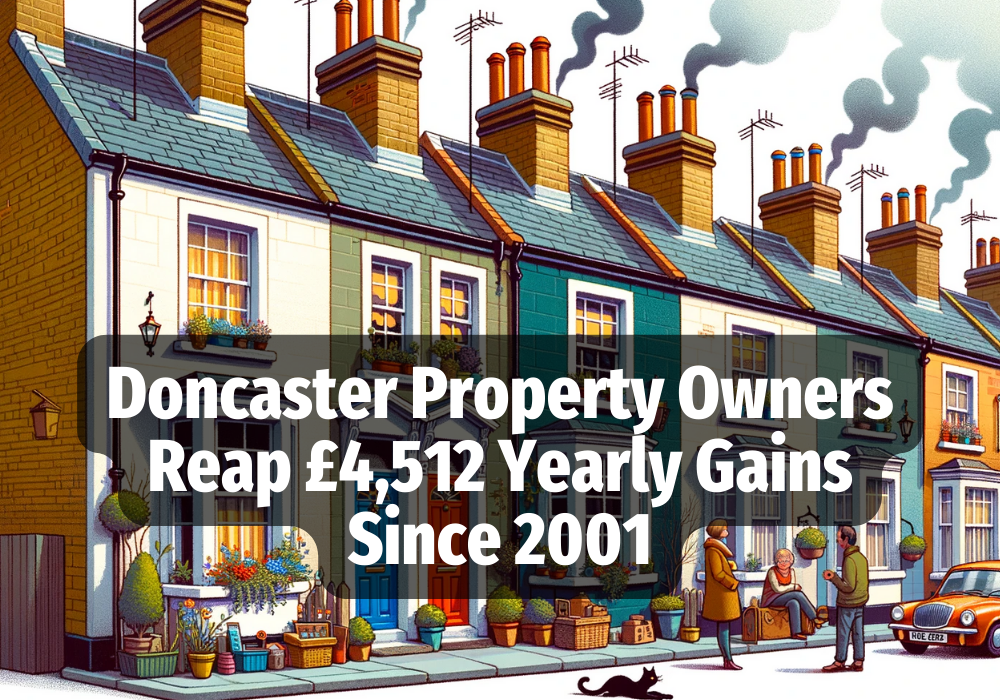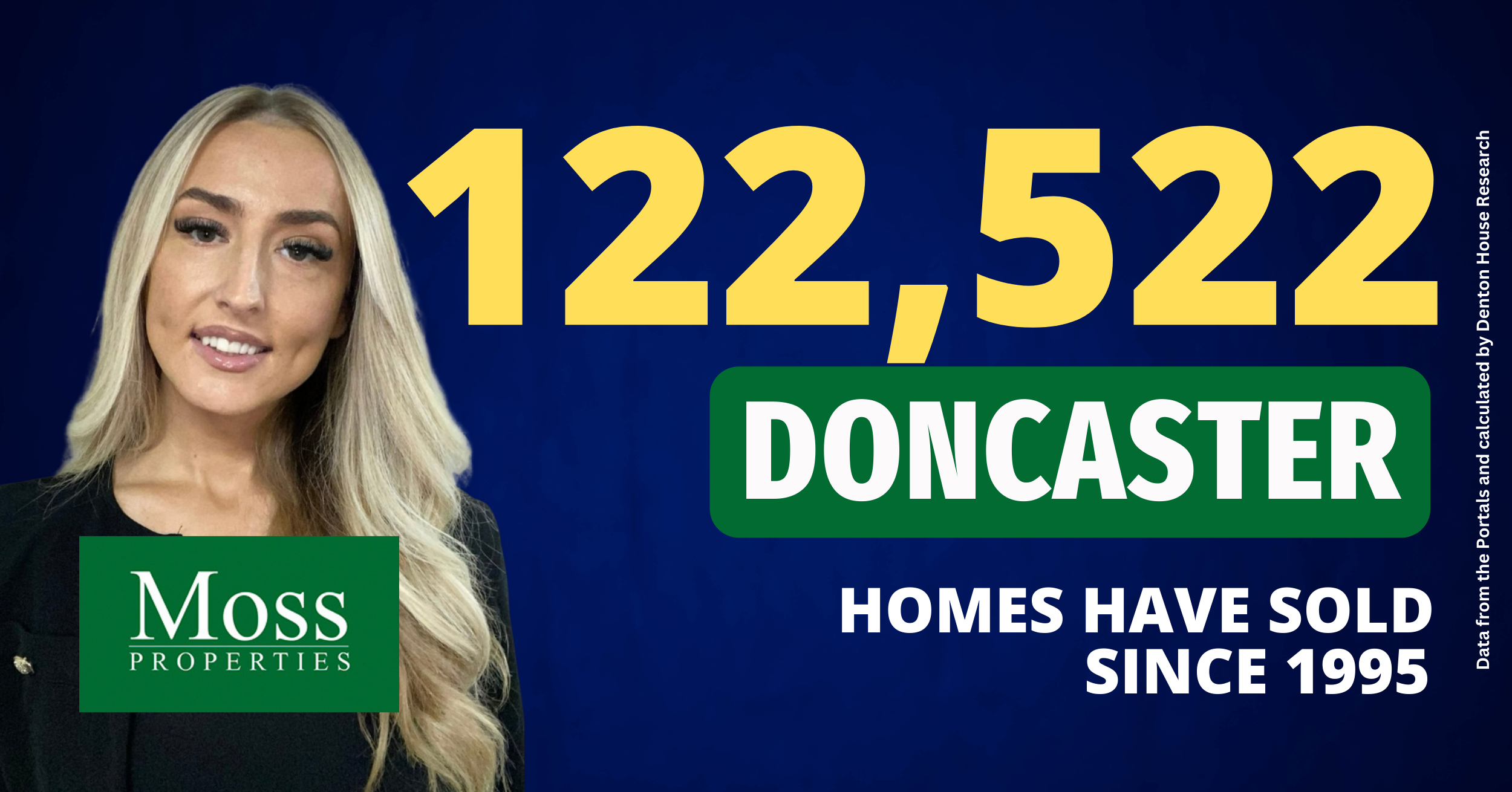
The headlines …
- Doncaster rents up by 8.1% in the last 12 months
- Doncaster house prices up 14.1% in the last 12 months
- Doncaster landlords helped by ultra-low mortgage rates and a stamp duty holiday
- Yet, some landlords in Doncaster anxious about a possible end to no fault evictions
- New EPC rules could cost Doncaster landlords £10,000+ per property
In this article, I will look at what happened in 2021 in the Doncaster buy-to-let property market and give you my opinion as to what lies ahead for Doncaster landlords in 2022 and beyond.
On a positive note, Doncaster house prices have rocketed, rents have risen faster than inflation, at the start of the year we had the benefit of a stamp duty holiday and finally, ultra-low mortgage rates, meaning Doncaster landlords had lots to be happy about in 2021.
On a more cautious note, the laws regarding renting are currently being debated in Parliament which will see the end of no-fault tenant evictions and changes in regulations will require Doncaster landlords to make their buy-to-let rental properties more eco-friendly at a cost of up to £10,000+ each.
So, let’s have a look at these points …
Doncaster Rents will Continue to Rise in 2022
Doncaster buy-to-let landlords have seen the average rent of a Doncaster rental property rise by 8.1% in the last 12 months.
The number of Doncaster properties available to rent on the property portals (e.g. Rightmove etc) at any one time is roughly 35% to 40% below the last decade’s average, meaning there is greater competition for each rental property.
Demand has increased for several reasons.
Firstly, some homeowners cashed in on the high prices, sold up and moved into rented property.
Secondly, some Doncaster buy-to-let landlords have also cashed in on the buoyant property market and sold their rental property when their existing tenant handed in their notice.
Finally, the rental sector has an inverse relationship to the state of the general British economy, meaning with the uncertainty in the British economy in the early part of 2021, this meant more people decided to rent rather than tie themselves into a mortgage.
Looking at the supply side of the Doncaster rental market, in the short term, rents will continue to grow as some Doncaster landlords are abandoning the rental market – some because of the impending regulation changes which I will talk about later and others with the natural flow of people cashing in their investments on retirement.
With increased demand and restricted supply, this will only lead to competition becoming more severe between renters, thus making Doncaster rents continue to rise.
Doncaster House Price Growth Will Slow
For those that own property, the way house prices grew in 2021 surprised most people.
Doncaster house prices, according to the Land Registry, grew by 14.1% in 2021, with the typical Doncaster home reaching £178,600.
Many local landlords have been helped by this increase in Doncaster house prices and will be in a place to cash in on those capital gains by either selling their buy-to-let property (as mentioned in the previous section) or releasing some equity by re-mortgaging.
Whether Doncaster house price rises carry on at such a rate in 2022 will mainly depend on whether the imbalance between the number of properties that come on to the market (supply) is by the number of buyers (demand).
Most commentators believe that nationally house prices will be between 3% and 5% higher by the end of 2022 and I can see no reason why Doncaster house prices won’t be in that range by the end of the year either.
Mortgage Rates Will Rise
The reduction in tax relief for Doncaster buy-to-let landlords with mortgages in the last five years hit some landlords hard, yet this has been tempered by the inexpensive ultra-low mortgages available to buy-to-let landlords.
Yet even with the Bank of England increase in base rates, Doncaster landlords with big deposits of 40% or more can benefit from low rates. For example, at the time of writing, you can get a BTL mortgage at 1.49% fixed for 5 years with a 40% deposit (meaning borrowing £180,000 on a £300,000 purchase would only cost you £719 per month on a 25-year mortgage – or £224 per month on interest only).
However, those with only a 25% deposit must pay slightly more, but only at a mortgage rate of 1.64% – who can remember mortgage rates of 14% to 15% in 1992?
With inflation rising, the Bank of England has already indicated further interest rate rises are on the cards. I suspect they will be around the 1% mark by Christmas 2022. Therefore, if you are one of the one in five landlords on a variable rate mortgage, your margins will be squeezed as your variable rate mortgage will rise in line with the Bank of England interest rate rise.
Maybe it’s time to consider fixing your mortgage?
The End of No-fault Evictions?
The Renters’ Reform Bill in England and The Renting Homes Act in Wales are both set to abolish Section 21 (no fault eviction). Section 21 laws allow landlords to take back possession of their rental properties without having to prove fault by the tenant.
Yet in 2022, Westminster will issue plans for a change of this law which will probably incorporate the eradication of Section 21, which would signify a major change in the balance of power between the landlord and tenant.
Some doom mongers are worried that with the abolition of Section 21, Doncaster landlords may be unenthusiastic about renting and therefore sell up and leave the rental sector altogether. Yet these people said the same when tax relief for landlords was changed five years ago.
The Scottish equivalent of Section 21 was abolished at the end of 2017.
At the time, there was some anxiety about how this would affect the Scottish rental market, as anxious landlords and letting agents felt that they could lose control of their rental properties under this new law. Nonetheless, just over four years later, the rental sector has not collapsed in Scotland. The buy-to-let market remains upbeat, and there are signs that a Scottish landlords’ right to evict their tenant has been reinforced by these changes in the law.
The reason the Scottish changes worked was the new grounds for repossessing rental properties was clear and wide-ranging. The Scots sped up the slow and unwieldy eviction process where the landlord had a legal and genuine reason to re-claim their property.
All I hope is the same changes are made south of the border to the court procedure.
New EPC Rules Could Cost Doncaster Landlords £10,000+ per Property
The law currently stands that Doncaster landlords need an Energy Performance Certificate (EPC) with at least a rating of E.
Westminster is anticipated to increase the EPC requirement for private rental properties in England and Wales to an EPC rating of C for all new rental tenancies by 2025/6, and for all existing tenancies by 2028, whilst Scottish landlords are also expected to see energy efficiency measures in their new proposed Housing Bill.
The problem is 1,959,045 of the 2,965,455 registered rental properties on the EPC database have an energy rating of D or below.
To take a property from an EPC D rating to a C rating might only cost a few hundred pounds, yet the average for all rental D and E rated properties has been calculated at just over £10,000 per property.
My advice to every Doncaster landlord is to look at the full EPC report of their rental property (and if you haven’t got it, contact me and I will send it to you -whether you are a client or not) as that will tell you whether this will be a big or small job.
Renovating the UK’s rental stock to meet the Government’s carbon neutral targets will be a big trial for landlords. There is talk of exemptions, as there currently is for the existing minimum EPC E rating – yet only time will tell on that front.
Maybe those Doncaster landlords currently buying properties to add to their rental portfolio should reconsider their buying strategy? In the past, it has been normal for Doncaster buy-to-let investors to be attracted to the inexpensive older properties that need an overhaul. However, with the potential energy efficiency laws coming into the game, it’s rational to suggest that buy-to-let landlords will be more predisposed to buying slightly newer properties rather than have the cost for the upgrades to meet the potential energy targets.
Conclusion
Roll the clock back 20 years and making money from buy-to-let in Doncaster was as easy as falling off a log. Yet with increased legislation and regulation, together with the changing dynamics of the British economy and the requirements tenants want in a rental property, making money won’t be as easy over the next 20 years.
It amazes me that 11 out of 20 landlords do not use a letting agent to help them with their rental portfolio, considering the cost can be offset against your tax.
Moving forward, the savvy Doncaster landlords will more and more utilise their letting agent not only to collect the rent and manage the property but also build up their portfolio to withstand the regulatory and demographic changes on the horizon, and to ensure that their investment is fit for purpose in the medium to long-term.
If your existing letting agent does not offer such advice, or you are a self-managing landlord, let’s have a chat about the future of the Doncaster rental market.
Whether you are a client of mine or not, if you would like me to look at your rental portfolio and see where you stand, then drop me a line and maybe we can meet for a coffee (or we can meet virtually over Zoom) to discuss the matter – all at no charge.







